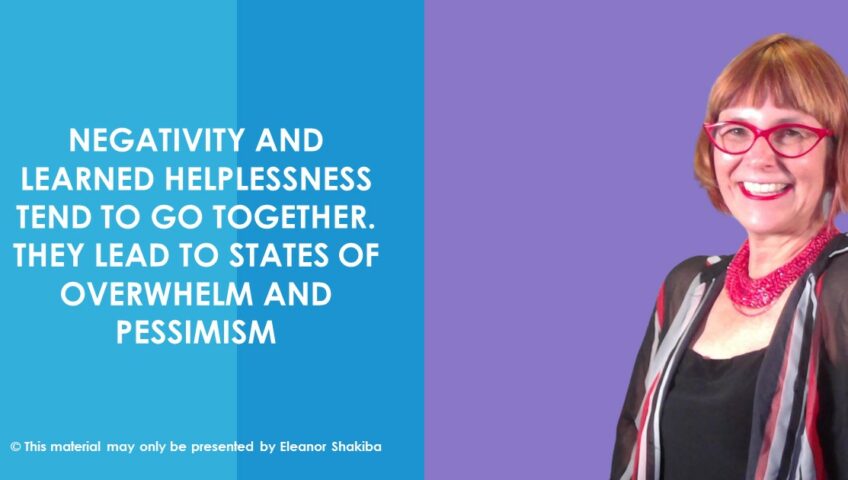Her head curled down and shoulders slouched, my new coaching client was a picture of despair. My first instinct was to ask, “What’s wrong?” After all, she looked like she needed sympathy and advice.
I chose to ignore my instinct, knowing it would trap us in a game of clients – coach collusion. Fuelled by the brain’s natural negativity bias, this type of collusion subtly focuses coaching conversations on negatives rather than positives. Ultimately, this makes solution-finding more trying. Great coaches don’t ignore negatives, but they do reframe them.
I base my positive psychology training and coaching methods on those of renowned hypnotherapist Milton Erickson. He was a master of positive reframing and his techniques are useful in resilience training, assertiveness programs and one-to-one coaching. His finely crafted language patterns subtly directed clients’ attention. Instead of asking about the past, Erickson asked about the future. He didn’t ask what was wrong. Instead, he encouraged his clients to picture how things might go right in the future. On the surface, Erickson’s techniques seem simple. The more you use them, though, the more you understand they are highly flexible and engaging tools for positive change.
As a trainer or facilitator with an interest in positive psychology training, how can you use Ericksonian language patterns to overcome the brain’s negativity bias? Here are a few of my favourite techniques, which I cover in my advanced level workshops for trainers, course creators and facilitators.
Open your sessions with neutral questions
Asking what’s wrong subtly focuses attention on problems. Don’t do it! Instead, frame your questions in neutral, ‘clean’ language. Start your coaching sessions by asking, “How are you travelling this week?” Even better, remain silent and let your clients open the conversation.
Temporalise negative feelings
Great coaches don’t ignore negatives. This is particularly true when seeking to empathise with clients. However, really successful coaches know that empathy is different to collusion. When a coach speaks as though a negative emotional state will be ongoing, collusion occurs. The coach sides with the client’s negative expectations.
You can avoid doing this by adding temporal tags to your empathic statements. Despite the complex name, a temporal tag is a simple linguistic device. It is a short phrase which suggests a timeline or endpoint. For example, a savvy coach might empathise by saying, “Things seem bad right now.” The last two words of this empathic statements suggest the emotion is transitory.
Probe for counter evidence and counter examples
The negativity bias has been shown to influence what people remember. Put simply, brains remember negative experiences more clearly than positive experiences. This is why excellent coaches probe full counter examples when their clients raise problematic situations.
Promote self-efficacy
Negativity and learned helplessness tend to go together. They lead to states of overwhelm and pessimism, in which your cochees feel incapable of taking action. Your job is to highlight opportunities for empowered action. Do this by asking questions about steps your coachees can take to solve their problems and overcome challenges.
Mastering the art of positive reframing is an exciting way to boost your impact as a positive psychology practitioner. For more information about simple tools to transform your results, download the Positive Psychology Toolkit for HR and L&D Practitioners.
About the author: Eleanor Shakiba
Eleanor is a positive psychology trainer and coach. Her passion is teaching skills for positive thinking, proactive communication and purposeful leadership. Her clients work in academia, education, IT, engineering, finance and health. Eleanor is qualified in Social Anthropology, Positive Psychology, Counselling, Coaching, Adult Education and Neuro Linguistic Programming. She’s the author of the Positive Psychology Toolkit for HR and L&D Practitioners, a free resource for trainers.
